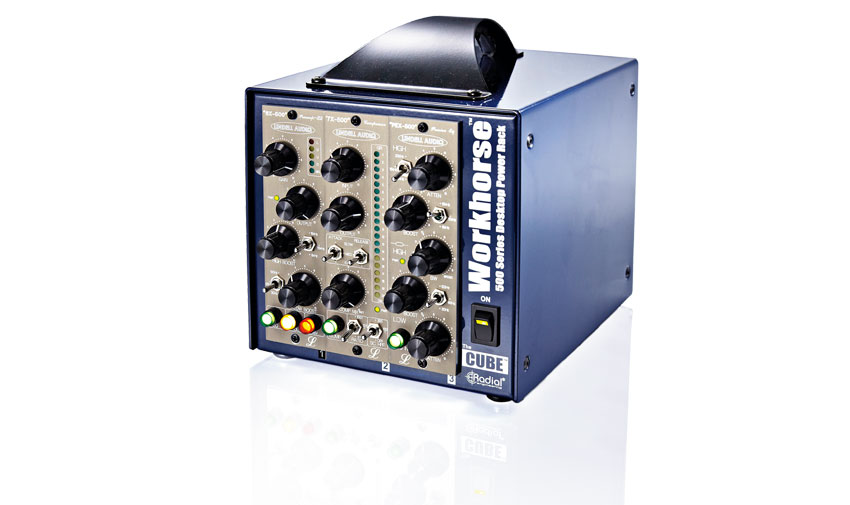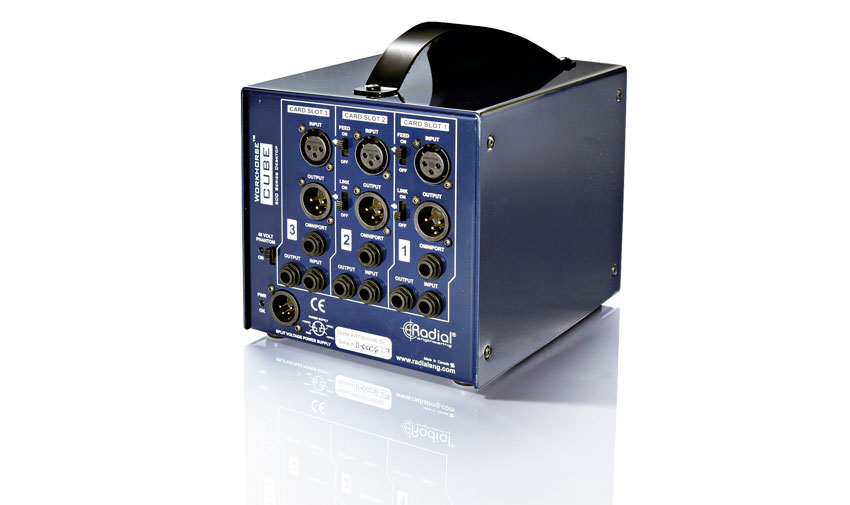MusicRadar Verdict
Combining great sonic capabilities, ergonomic design and good build quality it'll prove hard to resist.
Pros
- +
Great sounding. Superb build quality. Excellent value for money.
Cons
- -
No HP filter.
MusicRadar's got your back

Lindell Audio 6X-500 Mic Pre/EQ review

Rear
Lindell Audio has only been around since 2010 but by heading into the 500 series market with the 6X-500 Mic Pre/EQ, this ambitious company is putting itself in the same arena with some pretty hard hitting competition. With the likes of API, Chandler, Elysia, Tonelux and Empirical (to name but a few of their competitors), this is a high end sector of the market where character and quality count.
"We have a mic pre with input and output level stages plus high and low bands of Pultec style EQ"
First things first, this module looks good. The front panel has a pleasing style and the knobs and switches feel classy. With the 500 modules' small size, things have to be compact and Lindell have packed it in without losing clarity or logic of layout.
Here we have a mic pre with input and output level stages plus high and low bands of Pultec style EQ. The three illuminated switches at the bottom are for EQ in / out, Polarity and Phantom Power respectively.
Having level control of the input and output enables you to push the inputs to run them hot without overloading your AD inputs. Now a common practice among most engineers using consoles (where you can always pull the fader down to prevent recorded overloads), this proves to be a useful feature.
The boost only EQ is Lindell's take on the classic Pultec passive EQ. There are three switchable frequencies for each band (6kHz, 10kHz and 16kHz in the highs; 30, 60 and 100Hz in the lows) and, seeing how bringing them into play will only add gain, that output control becomes even more important.
Our only gripe is that there's no HP filter, which means you'll have to do it on the mic (if possible) or afterwards if needed. Sure its absence didn't cause any problems but sometimes you can't avoid a bit of rumble.
For this review, we tried out the module on a wide range of sources within both tracking and mixing sessions.
As a front end to a recording chain, the 6X has the ability to sound sweet and clean when treated gently. When pushed, it dishes out a fair bit of 'heat'. With a breathy female voice we had all the detail we needed beautifully enhanced with a bit of smooth 16kHz from the EQ. When it came to bass guitar, we pushed it pretty hard and heard a distinct and pleasing fattening of the sound without it choking or becoming fuzzy.
“Built from the same sacred stash of NOS silicon transistors and germanium diodes, giving it the soul – and snarl – of the original”: An octave-fuzz cult classic returns as Jam Pedals resurrects the Octaurus
What’s the buzz? Meet Yellowjacket, Cherry Audio's recreation of EDP’s trend-setting Wasp from 1978
“A fabulous trip through all eight songs by 24 wonderful artists and remixers... way beyond anything I could have hoped for”: Robert Smith announces new Cure remix album









